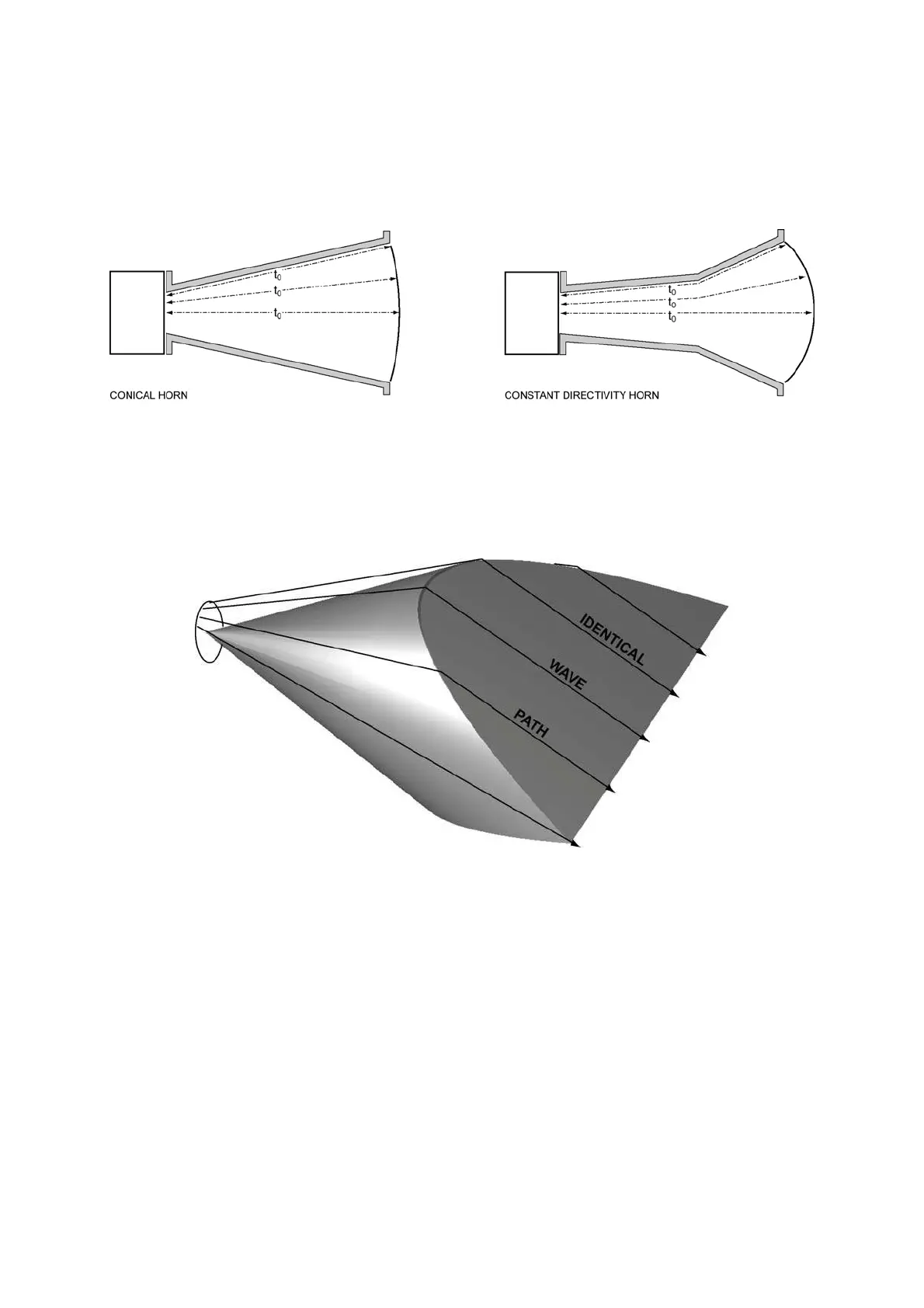dV-DOSC dV-SUB Manual V3.0 June 2005 145
APPENDIX 2:
HOW DOES THE DOSC WAVEGUIDE WORK?
The DOSC waveguide is the result of careful analysis of the wave path from the exit of a compression
driver, through the waveguide and the resulting wavefront shape at the exit of the device.
The wavefront emerging from a conical or constant directivity horn is the result of constant time
arrivals for all possible wave paths radiated by the driver exit. The two examples shown above
produce more or less curved wavefronts that obviously cannot meet the first WST criterion.
Figure 94: DOSC Waveguide – Internal Section
By comparison, the DOSC waveguide acts as a time alignment plug, delaying the arrival times of every
possible wave path to be the same value at the rectangular exit of the device. The internal plug is a
truncated conical piece that looks like a "tomahawk". This plug and its outer housing are precisely
constructed according to specific ratios between depth, height and cone angle in order to produce a
flat constant phase wavefront. Tight manufacturing tolerances are obtained through the use of
computer aided design and manufacturing (CAD/CAM) techniques in the fabrication of the DOSC
waveguide. As shown in the AES journal paper entitled ''Wavefront Sculpture Technology'', the
deviation from a flat wavefront must be less than λ/4 at the highest operating frequency - this
corresponds to less than 5 mm of curvature at 16 kHz and experiments have shown that the DOSC
waveguide provides less than 4 mm of curvature at this frequency.
DOSC waveguide technology is patented on an international basis.
(n°0331566 in Europe, n°5163167 in North America)

